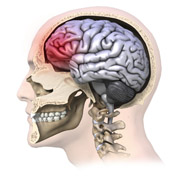Research and Innovation, UNL Office of

Center for Brain, Biology, and Behavior: Faculty Publications
Document Type
Article
Date of this Version
2020
Citation
Maerlender A et al., Sleep and stress in the acute phase of concussion in youth, Sports Medicine and Health Science, 2 (2020) 109–114. https:// doi.org/10.1016/j.smhs.2020.06.003
Abstract
This study sought to address the complex interplay between both biological and psychological perceptions of stress and sleep in the acute stages following a mild traumatic brain injury. A secondary goal was to identify potential targets for intervention. Eleven acutely injured youth (mean age 12 years) were studied at home with overnight actigraphy, salivary cortisol and melatonin assays, and subjective ratings of stress and fatigue (injured group). Nine matched control youth also were assessed (control group). Results suggested longer sleep latencies (time to fall asleep) and higher levels of fatigue in the injured group exist (p ¼ 0.025 and p ¼ 0.004, respectively). In the injured group, stress and sleep onset were significantly related with most subjects meeting criteria for Acute Stress Disorder. Melatonin levels were lower at bedtime in the injured group. Saliva samples were collected via passive drool at three time points: ~1 h before bed (“bedtime” or T1), immediately upon waking (time 2: T2), and 30 min post-waking (time 3: T3). Overnight increases in cortisol (T1 to T2) were greater for the injured group; however, post-sleep changes in cortisol (T2 to T3) were reversed with control concentrations increasing. These findings are unique in using actigraphy and salivary hormone levels in an acutely injured youth while in their homes. The differences in sleep latency and the presence of injury-related stress point to potential treatment targets in acute concussion.
Included in
Behavior and Behavior Mechanisms Commons, Nervous System Commons, Other Analytical, Diagnostic and Therapeutic Techniques and Equipment Commons, Other Neuroscience and Neurobiology Commons, Other Psychiatry and Psychology Commons, Rehabilitation and Therapy Commons, Sports Sciences Commons


Comments
This is an open access article under the CC BY-NC-ND license